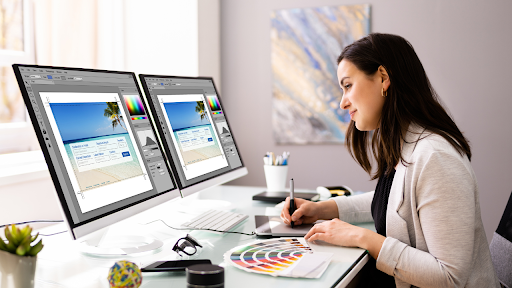In the ever-evolving realm of web design, where the marriage of aesthetics and psychology is pivotal, lies the foundation for creating truly captivating digital experiences. Among the dynamic interplay of design elements, website designers in Vancouver understand that the harmonious convergence of colors, typography, and design principles like Drupal website maintenance yields remarkable outcomes.
In this article, we delve into five pivotal avenues that showcase the powerful influence of colors and typography on user behavior and engagement.
5 Avenues That Showcase the Powerful Influence of Colors and Typography
Having read the below, you will understand how colors and typography influence user behavior:
1. Colors: Catalysts for Emotions and Communication
Colors wield a profound psychological impact on user experiences, influencing emotions and communication on websites. The selection of color palettes goes beyond aesthetics, as hues have the power to evoke strong feelings and convey subtle messages. Warm colors, such as vibrant reds and energetic oranges, ignite a sense of urgency and are strategically employed for action-oriented buttons, like “Sign Up” or “Get Started.” Conversely, cooler tones like calming blues and reassuring greens inspire trust and professionalism, making them an excellent fit for brands aiming to establish reliability and credibility.
2. Typography: Gateway to Readability and Engagement
Typography, often perceived merely as font selection, plays a multifaceted role in shaping user behavior. Beyond choosing the right typeface, elements such as font size, spacing, and style significantly affect readability and user engagement. Ensuring legibility is paramount, as content that’s easy to read keeps users invested in the digital journey. Yet, typography transcends practicality—it serves as a conduit for expressing a brand’s personality.
3. Hierarchical Influence: Guiding User Actions Seamlessly
The orchestration of colors and typography within a hierarchical structure is a masterful technique that guides users through websites seamlessly. Striking colors attract attention to essential elements, while variations in font styles—such as bold headers and subtle subheadings—emphasize content importance. This hierarchy serves as an invisible map, leading users intuitively from point to point, ensuring a smooth and engaging browsing experience.
4. Cultivating Trust and Fostering Consistency
In the digital landscape, trust and consistency are invaluable assets. Colors and typography play pivotal roles in cultivating a sense of trustworthiness and reliability. Consistency, in particular, is solidified when users form mental associations between colors, fonts, and the brand itself. The repeated exposure to these design choices builds familiarity, encouraging users to explore further, engage more deeply, and return for subsequent visits.
5. The Power of Visual Storytelling
Visual storytelling, an art form that weaves narratives through visuals, fonts, and colors, engages users on a profound level. By strategically employing a combination of these elements, designers can create a narrative that resonates emotionally and drives user actions. Every choice, from color selection to font style, contributes to the overarching story that users perceive while navigating the website.
Conclusion
The realm of web design psychology thrives on the fusion of colors, typography, and design concepts. For Vancouver’s website designers, wielding this knowledge, coupled with meticulous Drupal website maintenance, unlocks unparalleled potential. By harmonizing color psychology, typography finesse, hierarchical guidance, trust-building consistency, and the enchantment of visual storytelling, designers can craft digital landscapes that captivate users, nurture interactions, and imprint lasting memories on the virtual canvas.





